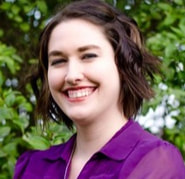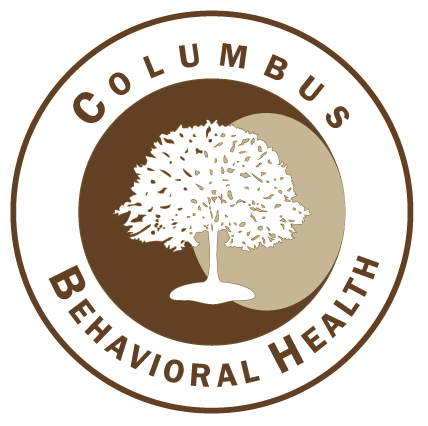Asia Place has packed her 13 years of specialized training and experience into this comprehensive eating disorder training course. Don’t miss this opportunity to learn from an expert! Learn at your own pace with this recorded training. For more information about the Eating Disorder course, please read below. To purchase the course, visit our store by clicking the button below.
Overview
Whether new to eating disorders or looking for a refresher about them, participants of this four-hour, beginner level course will discover useful information. Presenter Asia Place, LPCC-S, LICDC, draws on research, as well as her 13 years of specialized eating disorder experience, to identify who should be assessed for eating disorders (spoiler: more than you think); behaviors and thinking that warrant further exploration; specific questions to ask if an eating disorder is suspected; and interventions and techniques to use in the outpatient setting.
The course includes: Prevalence of eating disorders in specific demographics (statistics); triggers and correlations that cause/sustain eating disorders; basic neurobiology illustrating what is going on in the brain of someone who has an eating disorder; review of diagnostic criteria from DSM-V and level of care criteria; examples of restrictive behaviors, compensatory behaviors, objective vs subjective binges, and exercise vs mindful movement; a specific look at body image and Body Dysmorphic Disorder and how they are similar to and different from eating disorders; medical complications; standardized screening tools; goals of recovery; evidence-based treatment modalities; effective interventions and techniques; what NOT to say and do; online resources; and specialized programs in Ohio that offer higher levels of care for eating disorders.
This educational training is appropriate for professionals (counselors, social workers, marriage and family therapists, dietitians, personal trainers, medical providers, and teachers) as well as family and friends.
Note: Pica and Rumination Disorder are not addressed in this training.
Objectives
1. Cite statistics regarding the prevalence of eating disorders in specific demographics and populations in order to identify patients who may need to be assessed for eating disorders.
2. Identify the triggers, correlations and various causes of eating disorders, including the basic neurobiology of these disorders.
3. Review the DSM-V diagnostic criteria for Anorexia Nervosa, Bulimia Nervosa, Binge Eating Disorder, Other Specified Feeding and Eating Disorders, and Avoidant Restrictive Feeding and Intake Disorder.
4. Incorporate diagnostic criteria, specific eating and behavior questions and standardized screening tools to accurately assess and diagnose eating disorders.
5. Identify restrictive eating disorder behaviors/symptoms, clinical objective binges, and purging compensatory behaviors/symptoms. 6. Recognize signs/symptoms of orthorexia.
7. Explain steroid use and its relationship with “muscle dysmorphia/bigger-rexia.”
8. Compare and contrast compulsive, excessive, and/or unhealthy “ED-ercise” vs. healthy mindful movement.
9. Compare and contrast Eating Disorders and Body Dysmorphic Disorder (BDD).
10. List potential medical complications of eating disorders.
11. Distinguish levels for care for eating disorder treatment and criteria for admission to each.
12. List and utilize at least 5 of the evidenced-based treatments and interventions for treating adult clients with eating disorders at the outpatient level of care.
13. Identify at least 3 places where patients can receive specialized, higher level of care treatment for eating disorders in Ohio.
14. Use information and resources to educate clients and supports about body image, fat phobia, diet culture, eating disorder behaviors, diagnosis, medical complications, and evidence-based treatment interventions.
The Eating Disorder Training Agenda Includes:
HOUR 1
Asia opens the training by sharing and debunking common myths about eating disorders so preconceived ideas do not interfere with assessment, diagnosis or treatment of the illnesses. Then, through statistics, she discusses the prevalence of eating disorders in the general population as well as in specific demographics and populations, including CIS males, POC, LGBTQI+, children and adolescents, and those with disabilities, trauma, substance use/abuse, digestive disorders and other co-morbid disorders, illustrating which patients may need to be screened or assessed. She explains the role of genetics along with triggers for and correlations with eating disorders. A simplified lesson on neurobiology is presented to demonstrate what is going on the brain of someone who has an eating disorder followed by a review of diagnostic criteria for Anorexia Nervosa (AN), Bulimia Nervosa (BN), Binge Eating Disorder (BED), Other Specified Feeding and Eating Disorders (OSFED), and Avoidant Restrictive Food Intake Disorders (ARFID) from DSM-V.
HOUR 2
This hour begins with examples of the different ways restrictive behaviors can look cognitively and behaviorally. Objective and subjective binges, compensatory behaviors, eating disorders in athletes, steroid use, muscle dysmorphia, ED-ercise vs mindful movement, and body checking are described. Body image and Body Dysmorphic Disorder are defined and compared and contrasted with eating disorders. Asia reviews the level of care criteria, emphasizing when to refer from outpatient care to a specialist or higher level of care.
HOUR 3
The medical complications from restrictive behaviors, binging, and purging behaviors are examined along with refeeding symptoms. Asia then moves into specific questions to ask about eating, behaviors and thoughts about weight and body image to determine if further investigation/assessment is needed. She providers a list of standardized screening tools to use in the assessment process. The importance of a team approach is stressed and its members identified.
HOUR 4
A list of effective therapy modalities for eating disorder treatment is provided, along with a look at what recovery is, the goals of treatment and how to know when progress is being made. Detailed examples of scenarios and interventions to use in outpatient therapy are offered, including examples of what NOT to say and do. The hour, and training, concludes with an extensive list of resources for providers, as well as patients and families/loved ones, about eating disorders along with information about specialized eating disorder treatment facilities in Ohio.
Cost
$65 with CEUs includes:
- Unlimited access to the training video for personal use (not for public broadcast)
- 4 Hours of training by an expert in the field
- PDF of Educational Slides
- 4 credit hours of continuing education for Ohio Counselors,Social Workers and Marriage & Family Therapists (details in Continuing Education section below)
$45 without CEUs includes:
- Everything listed above except CEU credits
Continuing Education
Columbus Behavioral Health is an approved provider by Ohio Counselor, Social Worker and Marriage and Family Therapist Board to offer Continuing Education (Approval #RCST072501 through 7/31/26). You must complete the training and submit post test before 7/29/26 to receive CEU’s will be awarded to Ohio counselors, social workers and marriage and family therapists upon completion of course, including evaluation and post-test score of at least 80%. Certificate will be emailed after successful completion of the course and credits entered into CE Broker.
- The Ohio Nursing Board accepts CE credits issued by this board.
- Psychologists and out of state providers will receive a certificate of completion they can submit to their board for consideration of CE credits but approval is not guaranteed.
Please note: Links to download video and handouts are emailed to you immediately in your order confirmation. Please put the email you prefer the materials to be sent to on the checkout page.

About the Presenter
Asia Place, LPCC-S, CDCA has 13 years of experience and training in eating disorder treatment. Prior to her current work in private practice, she worked at The Center for Balanced Living (now The Emily Program), a specialized eating disorder facility in Columbus, Ohio, where she served as:
- Clinician in the Partial Hospital Program for Eating Disorders
- Assistant Director of the Intensive Outpatient Program for Eating Disorders
- Level of Care Manager and Intake Coordinator
- She has attended numerous trainings and conferences to stay current with research and treatment models in the field.
Purchase Eating Disorder Training Material
Disclosure statements
Presenter Asia Place, LPCC-S, does not have any any financial or other relationships the would cause bias or conflict of interest. She has not, and is not, receiving funding, product royalties, research grants or other support for presentation of this material or resources discussed within.
